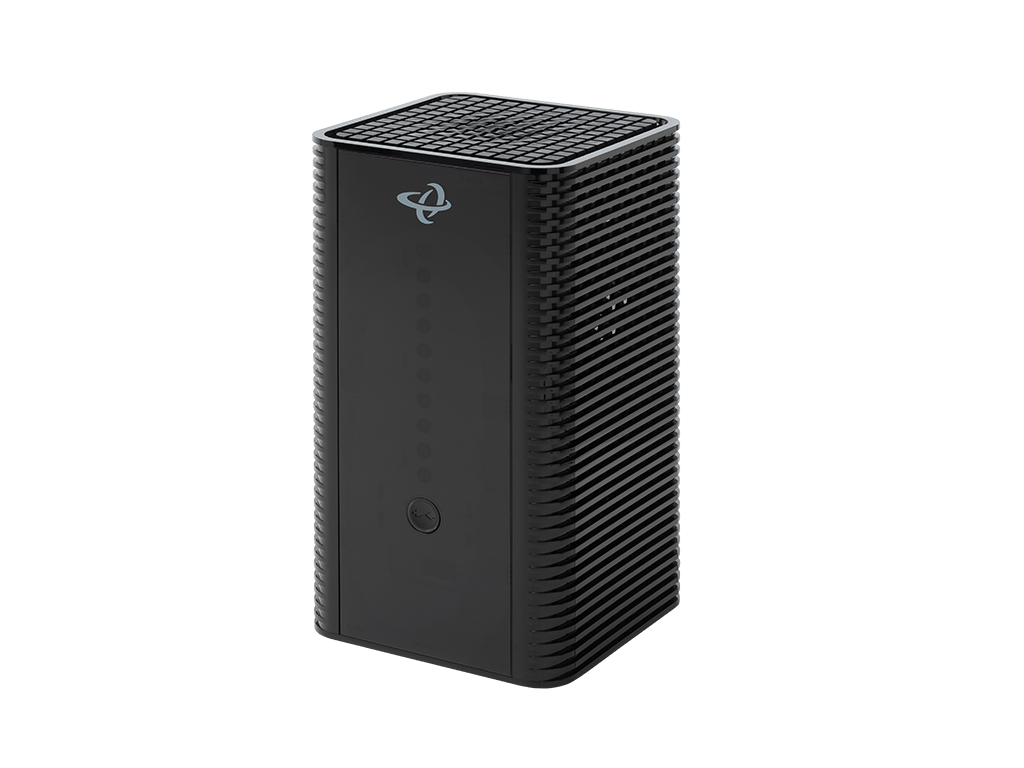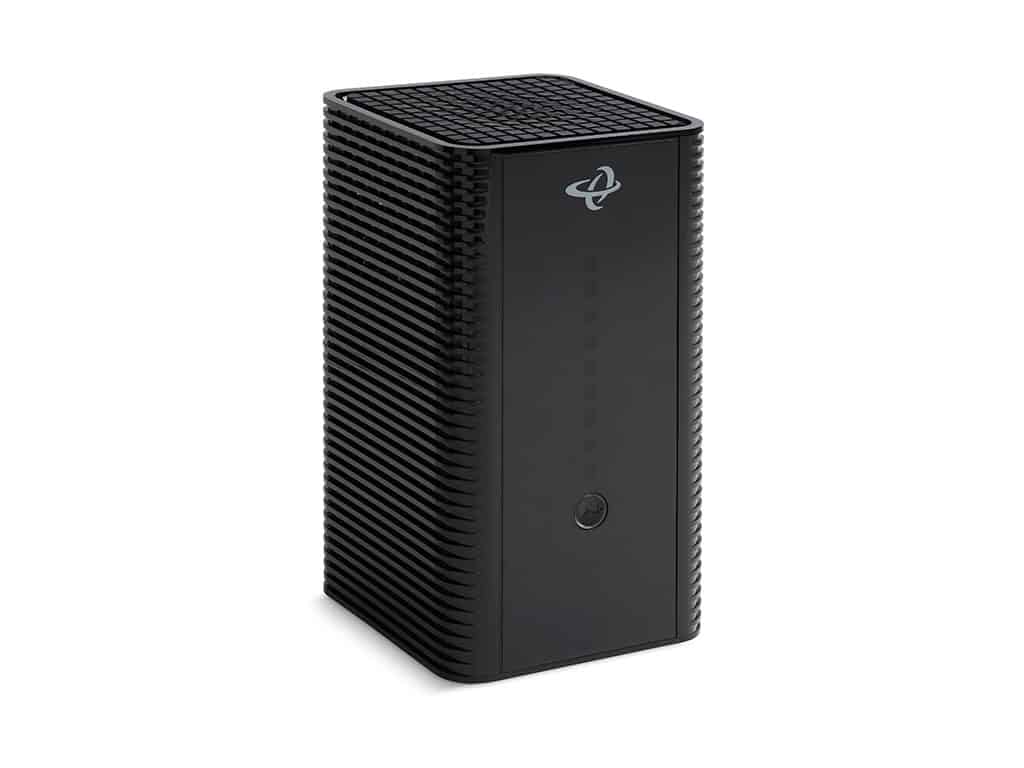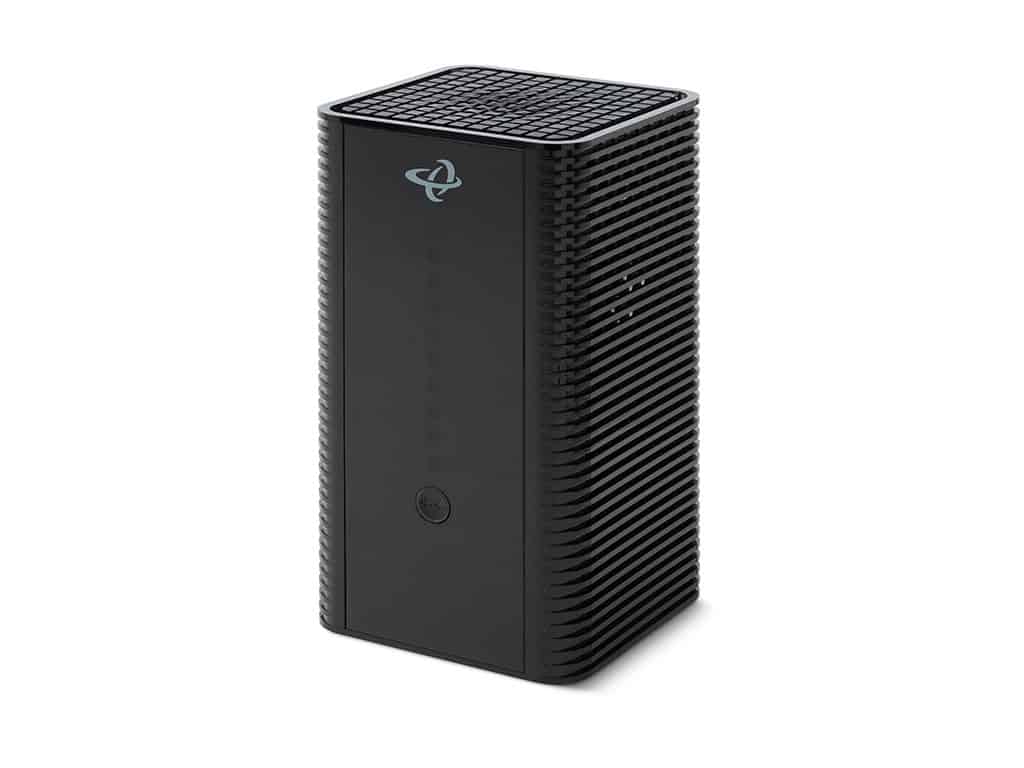DOCSIS 3.1 with Backward Compatibility
Supports 2×2 OFDM/OFDMA + 32×8 DOCSIS 3.0 channel bonding, providing gigabit-class performance today while staying compatible with legacy DOCSIS 3.0 networks.
Wi-Fi 5 (802.11ac)
Dual-band Wi-Fi with 4×4 5 GHz 802.11ac Wave 2 MU-MIMO and 3×3 2.4 GHz 802.11n, delivering stable coverage and speeds suitable for standard home usage.
All-in-One Simplicity
Combines modem and router functionality in a single box, reducing installation complexity, lowering inventory costs, and simplifying support.
Wired Connectivity
Four Gigabit Ethernet ports for wired devices plus a USB 3.0 port for storage and media sharing.
Remote Manageability
Full support for TR-069, TR-369 (USP), SNMP, and proprietary MIBs for operator control and visibility.
Benefits for Service Providers
- Cost-Optimized Deployment: Perfect for entry-level or lower service tiers where Wi-Fi 6 or Wi-Fi 7 is not required.
- Simplified Operations: One integrated gateway reduces truck rolls and customer setup issues.
- Carrier-Grade Reliability: Proven DOCSIS 3.1 technology for consistent performance.
- Meets Everyday Needs: Provides the Wi-Fi and wired connectivity households require for day-to-day activities.
Key Specifications
- DOCSIS Support: DOCSIS 3.1 (2×2 OFDM/OFDMA) + DOCSIS 3.0 (32×8)
- Wi-Fi: Dual-band Wi-Fi 5 (4×4 5 GHz 802.11ac Wave 2 + 3×3 2.4 GHz 802.11n)
- Ethernet Ports: 4× Gigabit LAN
- USB Ports: 1× USB 3.0
- Management: TR-069, TR-369 USP, SNMP, EasyMesh support
- Other Features: IPv4/IPv6, multiple SSIDs, advanced firewall and parental controls
Other Products to Consider
Product
Modem Type
Frequency
WiFi
Wired LAN
Voice
Learn More about Cable Modems & Routers
Why Your Modem Keeps Resetting and How to Fix It
Your modem is the gateway to your Internet connection — so when it starts resetting on its own, it can disrupt everything from video calls to streaming and online gaming. If your modem keeps resetting, there are several potential reasons, and understanding them can...
What Are Modems Used For? A Beginner’s Guide to How Internet Connections Work
Modems are used to connect your home to the Internet by translating signals from your Internet Service Provider (ISP) into digital data your devices can understand. If you use Internet, a modem is essential for bringing that connection into your home. Without a modem,...
Modem Basics: What It Is, How It Works, and Why You Need One
A modem is the essential device that connects your home to the Internet. It receives signals from your Internet Service Provider (ISP)—whether through cable, DSL, fiber, or cellular—and converts them into digital data your devices can use. One common example is the...
DOCSIS 4.0 Cable Modems: What You Need to Know Before Buying
DOCSIS 4.0 Is the Next Generation of Cable Modem Technology DOCSIS 4.0 represents a major leap in cable broadband performance. If you're researching what it means for your home Internet setup—or considering when to upgrade—this guide covers everything you need to...
What is an Internet Modem? (Simple Guide to How They Work)
An internet modem is the device that connects your home to your Internet Service Provider (ISP). It translates the signal from your ISP into a form your devices can use, allowing you to access the Internet. Without a modem, you wouldn’t be able to get online. ...


